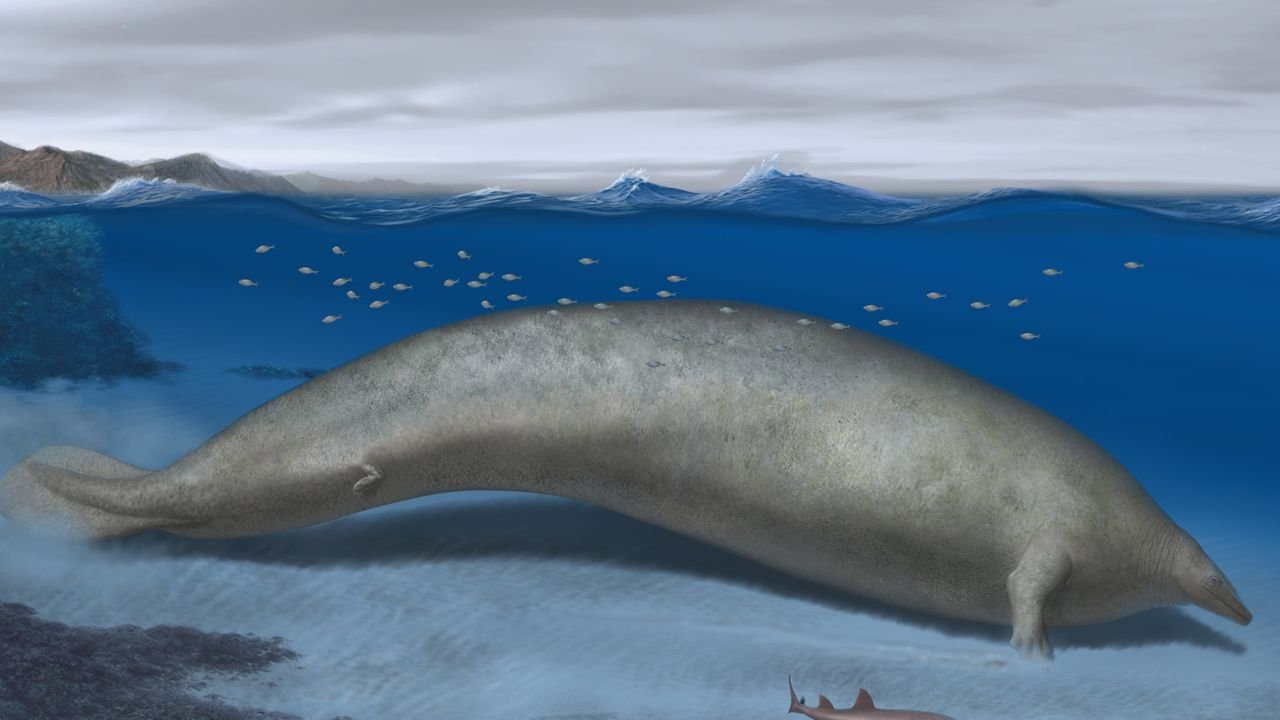Researchers have discovered a new contender for the title of heaviest animal ever to exist. The ancient whale would have weighed close to 200 tonnes and was long extinct.

Researchers have discovered a new contender for the title of heaviest animal ever to exist. The ancient whale would have weighed close to 200 tonnes and was long extinct. Only some of the largest blue whale specimens may have been able to match its weight, according to researchers. The creature was given the name Perucetus colossus because its fossilised bones were discovered in a desert in southern Peru.
Based on the dating of the sediments near the remains, it lived approximately 39 million years ago.
Dr. Eli Amson, a member of the discovery team headed by palaeontologist Dr. Mario Urbina, said that although the fossils were discovered 13 years ago, it took three years just to get them to Lima (the capital of Peru), where they have since been studied.
From the marine mammal, a basilosaurid, an early species of whale, 18 bones were found. These included a portion of a hip bone, four ribs, and 13 vertebrae.
However, despite these shattered pieces and their age, scientists were still able to piece together a significant amount of information about the creature.
Particularly, it is obvious that the bones were incredibly dense, resulting from a condition called osteosclerosis, in which internal spaces are filled. The bones were also oversized in that they had pachyostosis, or extra growth, on their exterior surfaces.
The team concluded that these weren’t symptoms of a disease but rather adaptations that would have provided this large whale with the buoyancy control it needed when foraging in shallow waters. Modern manatees, also known as sea cows, which live in coastal regions in some parts of the world, have similar bone features.
Coworker Dr. Rebecca Bennion from the Royal Belgian Institute of Natural Sciences in Brussels said, “Each vertebra weighs over 100kg, which is just completely mind-blowing.”
“I needed to do some 3D scanning, so several men had to move them to the centre of the floor in the museum. The bone was so dense that it broke the drill on the first try when the team tried to drill into the centre of some of these vertebrae to determine the bone density.”
When faced with a skeleton of a long-extinct species, scientists attempt to recreate the body mass and shape of the animal using models. They base their actions on what they understand about the biology of similar living things.
The length of Perucetus Colossus is estimated to have been between 17 and 20 metres, which is not unusual. However, just the weight of its bones would have ranged from 5.3 to 7.6 tonnes. And depending on the assumptions, it might have weighed anywhere between 85 tonnes and 320 tonnes once you factor in organs, muscle, and blubber.
The median number is 180, according to Dr. Amson, a curator at the Stuttgart State Museum of Natural History in Germany.
These were the size of the largest blue whales ever discovered during the time of commercial exploitation.
He told BBC News, “What we like to say is that Perucetus Colossus is in the same league as the blue whale.
“However, there isn’t any evidence to suggest that our particular person was particularly big or small; it was probably just a member of the general population. Therefore, it’s important to remember that the median estimate we use is already at the very upper limits of what blue whales can measure.”
Anyone who has been to the Natural History Museum in London will be very familiar with the blue whale that the research team used as one of its comparators in its investigations.
When the skeleton of this animal, known as Hope, was hung from the ceiling in the main hall in 2017, it took centre stage at the facility.
However, the skeleton was scanned and meticulously described before being installed, and it is now a valuable data source for scientists all over the world.
Despite the fact that Hope was a good five metres longer, Perucetus’ skeletal mass would have been two to three times greater in life.
The NHM’s curator of marine mammals, Richard Sabin, is ecstatic about the discovery and would love to bring some of it to London for display.
We took the time to digitally reconstruct Hope, measuring not only the size of the bones but also their shape, and as a result, our whale has gained some notoriety.
“We don’t get too caught up in labels, like ‘which was the largest specimen?,’ because we know science will eventually produce new information.
“What’s amazing about Perucetus is that it demonstrated so much mass about 30 million years ago or more, when we thought gigantism occurred in whales only 4.5 million years ago,” says Dr. Peters.